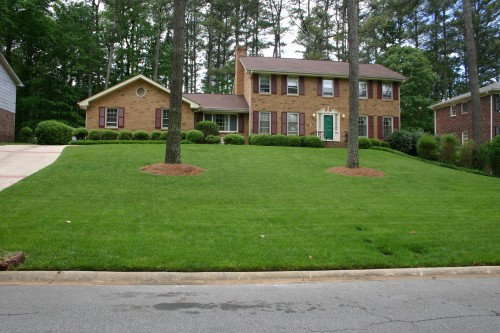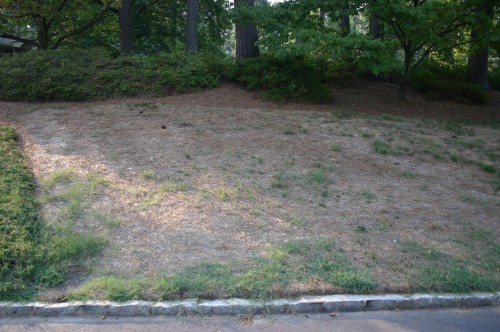





Fescue lawns can look devastated in the summer. I often see brown, lifeless patches in front of homes across the region. While extreme summer daytime heat is partly to blame, a less noticed factor is also at play: high night temperatures.
What effect does this have on fescue? This grass is called a “cool-season grass” partly because it requires cool nights to recover from daytime heat. If the night stays warm (above 70 – 75 degrees), the grass can’t make the energy it needs to grow the next day. Atlanta typically has a long string of days with daytime temperatures in the nineties. Is it any wonder that fescue gives up the ghost or goes dormant?
Turf expert Clint Waltz says fescue should be irrigated to avoid wilting in summer but only to supplement natural rainfall, not to exceed one inch per week. Don’t fertilize; the root system is limited in its uptake ability and there is no need to stimulate a stressed plant which does not want to grow under adverse climatic conditions. Raise the mowing height to three and one-half inches. This encourages the deepest possible rooting and helps shade the soil surface, which reduces water loss and soil heating.
The last suggestion is the most difficult for most homeowners: be patient and wait for environmental conditions to change. Tall fescue is hardier than it is given credit for. Once the weather changes in September, most people will be surprised how much of their tall fescue survived the summer swoon
If your fescue is showing no improvement by early September, it’s time to plan for fall reseeding.
Fescue seed is best planted in mid-September through mid-October….the earlier the better.
See Planting Fescue in an Existing Lawn for details.

fescue in its prime

summer decline in fescue
Copyright © www.100flowers.win Botanic Garden All Rights Reserved